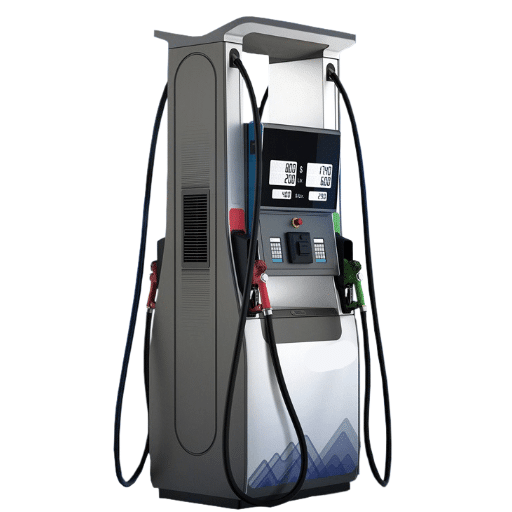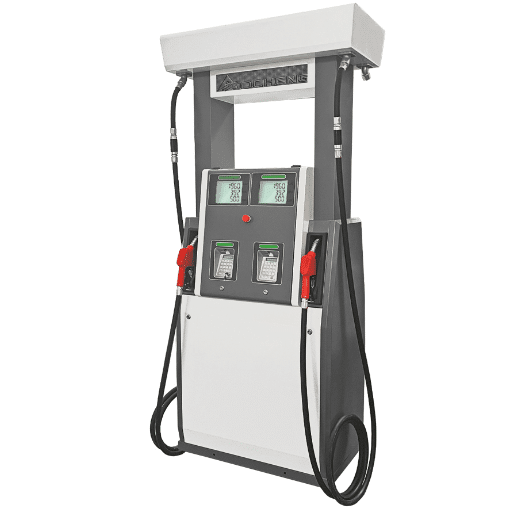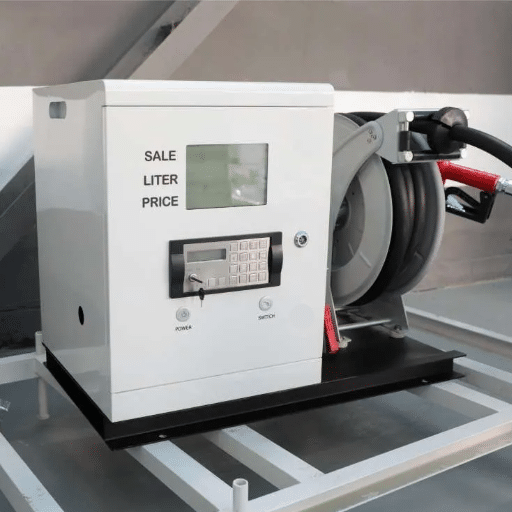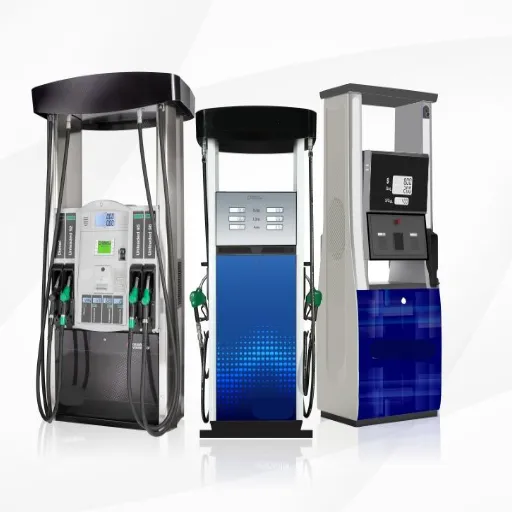Operating a gas station can yield a substantial profit; however, to figure out the actual income of gas station owners, it is necessary to consider more closely the different aspects that affect the profit. The earnings of gas station owners can largely range through the change of fuel prices and operational costs, the effect of the location, and the sales of the convenience store as an additional service. The article examines the main factors that determine the profitability and provides a thorough analysis of the revenue streams, industry trends, and practical relations. If you are a possible investor or just interested in the economics of gas stations, this manual will bring transparency and offer you useful knowledge about what in this vibrant business sector is the income source.
Understanding Gas Station Revenue
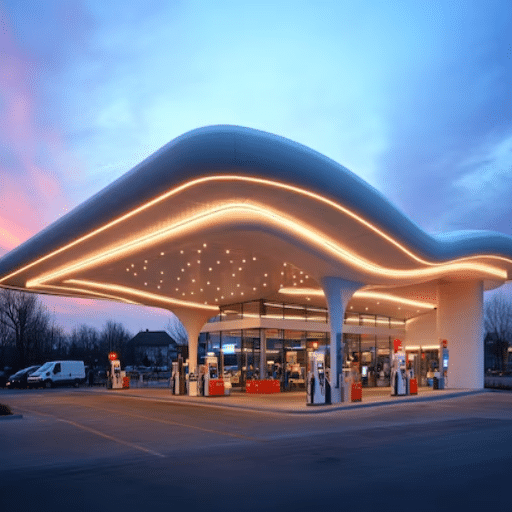
The lion’s share of gas station revenue is derived from two primary sources:
Fuel Sales
The sale of fuel, that is, gas and diesel, constitutes the principal revenue source. Although the profit margins on fuel are generally quite low due to fluctuating oil prices and fierce competition, with most stations making a few cents per gallon after covering their costs.
Convenience Store Sales
The sales of convenience store items like snacks, drinks, and other goods constitute higher profit margins and are thus a major factor in the station’s profitability. Gas stations, to a large extent, depend on these sales for survival.
Through a focus on maximizing both fuel and convenience store revenue streams, gas stations can maintain steady income over the long term and avoid the adverse effects of market fluctuations in fuel prices.
Factors Influencing Gas Station Profits
Gas station profitability is determined by a range of interrelated factors:
Fuel Price Volatility
The wholesale cost of fuel is subject to frequent fluctuations based on global crude oil prices, supply chain dynamics, and geopolitical tensions. Since gas stations typically add only a small markup to fuel prices, sharp increases in wholesale costs can erode profit margins, especially if price adjustments lag.
Consumer Demand and Location
Station profitability hinges on customer traffic, which is significantly influenced by location. High-traffic areas such as highways, urban centers, or intersections with limited competition tend to generate higher sales. Seasonal variations in demand, like summer travel peaks, also directly impact revenue.
Operating Expenses
Core expenses such as employee wages, utility bills, maintenance costs, and credit card fees place continuous financial pressure on gas station operations. Credit card transaction fees alone can consume a notable portion of the profit from fuel sales, making cost management critical.
Diversified Revenue Streams
Dependence solely on fuel sales is risky due to low margins. Convenience store goods, automotive services, car washes, and lottery ticket sales offer higher-margin opportunities that complement fuel revenue, helping stabilize overall profitability.
Competition
The level of competition in the surrounding area plays a crucial role. Stations in competitive markets may resort to price wars to attract customers, which can further narrow margins.
By effectively managing costs, optimizing non-fuel revenue streams, and adapting to market fluctuations, gas stations can improve their resilience and maintain profitability in various economic conditions.
Revenue Sources for Gas Stations
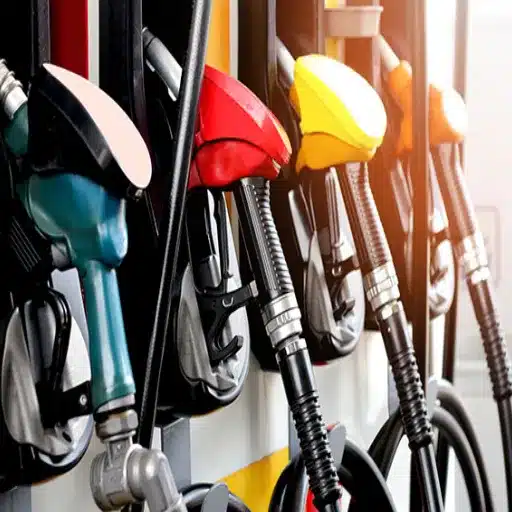
Gas stations make money from various sources these days, which can be classified into three main categories that include fuel sales, convenience store sales, and ancillary services. Fuel sales are usually the largest part of the revenue, since gasoline and diesel are still the main things that people need if they want to drive their vehicles. On the other hand, due to the low margin on fuel, gas stations have to depend a lot on non-fuel income just to maintain their profitability.
Gas stations and retail stores are among the most important revenue sources as they sell products like snacks, drinks, lottery tickets, and groceries. The profit margin on these products is usually higher than that of fuel. Another possible source of revenue is the services provided, like car washes, oil changes, and air pumps, that not only offer convenience to customers but also generate income for the gas station.
In addition, the sources of revenue mentioned above can also include leasing space for ATMs, food franchise partnerships, and selling branded goods. Gas stations are able to balance their revenue from different streams and thus keep being competitive and at the same time be flexible to the market changes, by having a mix of high-volume, low-margin, and low-volume, high-margin products and services.
Gas Prices and Their Impact on Revenue
Gasoline prices are quite powerful in affecting the income pattern of gas stations. The low profit margin on petroleum sales, which is sometimes determined by the retail price of gasoline and the amount of taxes plus credit card processing fees, is a factor that goes against the common view of fuel sales being the most profitable. Thus, the costs of crude oil lead to the pricing of gasoline, and these can either cause the retail margins to be narrower or wider. If there is a sudden increase in gas prices, people may cut down on their fuel consumption, or drivers may look for ways to save gas or reduce their trips, thus the volume of sales can go down even though there is an increase in revenue from the sale of each gallon of gas.
Moreover, increased gas prices can cause a shift in consumer spending patterns that would lead to a drop in disbursements on non-fuel services like some convenience store items, or even car washes, which are relatively high in terms of profit margins. On the other hand, customers are usually willing to spend more on the mentioned extra services during times of low gas prices. The price instability is further worsened by external factors such as political conflicts, changes in demand and supply patterns according to seasons, and the presence of competitors in the region, and all these eventually affect gas stations’ revenue through the price of gas lessening or increasing. To overcome such circumstances, maintaining the profitability of the gas stations amidst these fluctuations is heavily reliant on the combination of a well-thought-out pricing strategy and various revenue streams.
Profitability of Owning a Gas Station
The factors that determine the profitability of gas station ownership are diverse, including location, operational efficiency, and revenue streams. The stations situated in high-traffic locations and employing competitive pricing strategies are the ones that are more likely to earn a stable income at all times. However, fuel sales have the lowest profit margins, and they often rely on selling convenience items and offering ancillary services like car washes or repairs to enhance total profit. Good cost management and a strong customer experience focus are also very important for maintaining profitability in this extremely competitive industry.
Average Profit Margins in the Industry
Fuel Profit Margins
1.5% to 3%
Typical average profit margin in the fuel retailing sector
In the fuel retailing sector, the typical average profit margin is around 1.5% to 3%, plus or minus some, depending mainly on location, competition, and operational efficiency. Even though fuel sales bring in a large chunk of overall revenue, the profit share is often taken by non-fuel products and services like convenience store items, food services, and car washes, which have profit margins of 25% to 50% or more. According to the industry benchmarks, the gas stations located in urban and high-traffic areas usually show much better financial performance; however, the success greatly relies on cost management, pricing strategies, and excellent customer service to attract repeat customers anyway.
How Much Do Gas Station Owners Make Annually?
Annual Earnings Range
Average yearly income of gas station owners in the U.S.
The annual earnings of gas station proprietors can be quite different from one another since the place, the number of people passing by, and the overall running of the business are very different. The average yearly income of the gas station owners in the U. S. is between $40,000 and $100,000. Gas stations located in the busy city centers or along the major highways usually earn a lot, but the profit margin on the fuel sold is still very low—generally speaking, around 2-7 cents per gallon after all the costs have been covered, including labor, utilities, and maintenance. To increase the overall profit, the station owners depend on the side services that are more profitable than the gas sales, for instance, convenience store sales and car wash, which offer 25%-50% profit margins, respectively. However, being able to manage costs well, having competitive pricing, and focusing on good service to attract and keep customers are the strategies that will always result in the highest income.
| Revenue Source | Profit Margin | Importance Level |
|---|---|---|
| Fuel Sales | 2-7 cents per gallon (1.5-3%) | High volume, low margin |
| Convenience Store Items | 25-40% | Critical for profitability |
| Car Wash Services | Up to 50% | High margin supplement |
| Food Services | 25-50% | Growing revenue stream |
Operating Costs and Their Effect on Profitability
Running a gas station comes with a lot of costs that influence the profit directly. The major operating costs are the purchase of fuel, utilities, wages, insurance, property taxes of property, and repairs of equipment repairs. Fuel is often sold at low margins, which means that the price variations in the wholesale fuel can have a considerable impact on the net income of a gas station. Besides, labor is a huge cost, and it includes wages and benefits, which require the application of efficient workforce management.
Utilities such as electricity, water, and heating add up to the running costs significantly, especially in the winter when energy usage goes up. Having to make repairs and maintain fuel pumps, storage tanks, and other equipment is important for laying off as a regulatory compliant and respectful to the operation side of the business. However, these expenditures are not really shields for long-term costs that lead to downsizing in the industry.
In many instances, the selling of low-margin fuel has to be accompanied by high-margin ancillary services to the gas station’s profitability. Take, for instance, convenience stores that can generate gross profit margins of about 25% to 40%, while other services like car washes could be up to 50%. The operating costs can be kept under control, and the challenge of varying profit margins in fuel sales can be overcome through the installation of energy-efficient solutions, labor costs can be streamlined, and stock levels.
Additional Revenue Streams for Gas Stations
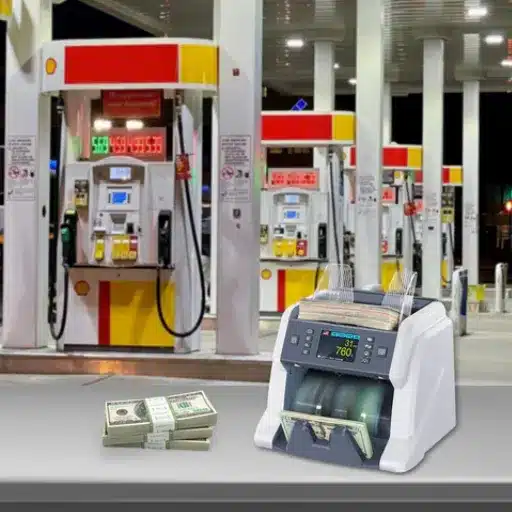
Gas stations can adopt various strategies to make their revenue streams more stable and diverse:
Convenience Store Sales
It is all about selling different types of products, with snacks, drinks, and daily-use items being the main categories. This is a great way of getting more money. The selling of high-margin items like bottled drinks or packaged snacks is very successful.
Car Wash Services
There is no doubt that an automatic car wash or a self-service car wash is one of the most profitable businesses in the fuel sector, and it brings more customers to the station.
Foodservice Options
Fast food like coffee, sandwiches, or other fast-food brands can be the main sources of income as they cater to the customers who want quick meals and are willing to pay for them.
Loyalty Programs
Giving discounts or benefits to the regular customers can be a good way of keeping them coming back and thus increasing sales.
Vehicle Maintenance Services
Gas stations that offer tire, oil changes, and other minor repairs can not only use these services as a source of income but also as a tool for winning the customer’s loyalty through convenience.
The implementation of these tactics enables gas stations to stay in the market and to some extent control the hazards that come with fuel sales.
Inside the Store: Convenience Store Sales
The sales of convenience stores in gas stations are very important for the revenue, as they provide quick access to the necessary items for the customers and also encourage buying impulsively. To raise their profitability, the gas stations’ convenience stores can try selling high-margin products like snacks, drinks, and premade meals, which are the top-selling categories. Proper placement of the products is crucial; making the most of the visibility of the favorite items right next to the cash registers or in the areas with lots of people passing by can lead to more sales. The introduction of technologies, like self-service counters or mobile applications, is a way to not only supercharge customer convenience but also make management more efficient. Special promotions, package offers, and sales of limited-time items not only boost sales but also create loyal customers. Moreover, by adjusting the inventory and pricing tactics to the local population, the gas station convenience stores can maintain and even increase their sales as they are still the quickest to respond to the needs of the customers.
Car Wash Services as a Revenue Stream
Car wash services are an excellent way for convenience stores to make some profit by adding an extra service or two. As per the data provided by the industry, fully automated car washes are the least costly in terms of labor and still the highest in terms of profits; hence, it is a very good investment. When a car wash is placed near a gas station or a convenience store, it is a great benefit for the customers because they can fuel, buy, and wash their cars at the same time. Nowadays, car wash machines, whether touch-free or sponge-type, attract different customers as they offer an option of the cleaning level and water recycling technologies, which are eco-friendly.
On top of that, the subscription-based car wash programs or loyalty incentives not only ensure that customers will stay, but they will also bring an increase in customer lifetime value. Working with the existing payment systems, including mobile apps or loyalty cards, the customer experience will be smoother, and sales of goods in the convenience store will also be boosted. It is an ideal scenario for everyone as convenience stores will sell less but will make more money through car washes, besides, they will enjoy the higher traffic since the car wash clientele will also count among their regular customers.
Other Additional Revenue Sources
Convenience stores could enhance their earnings by providing more services to their customer base. Self-service automated kiosks are one choice, allowing for a wide range of transactions, such as buying tickets, topping up mobile phones, or getting prepaid gift cards. These kiosks are not only user-friendly but also save workers from doing routine tasks, thus bringing in more revenue. Another area of the market that supermarkets can tap into is the offering of fresh food, and even more so by forming a partnership with local suppliers that would provide ready-to-eat meal options, since food services are usually accompanied by higher margins than traditional retail. Besides, the introduction of parcel lockers for package receipt and dispatch services could entice online shoppers and, thus, create a consistent pedestrian traffic flow. These methods not only meet the changing consumer habits but also help convenience stores emerge as versatile centers with the capability of attracting a variety of customer demands.
Costs of Gas Station Ownership
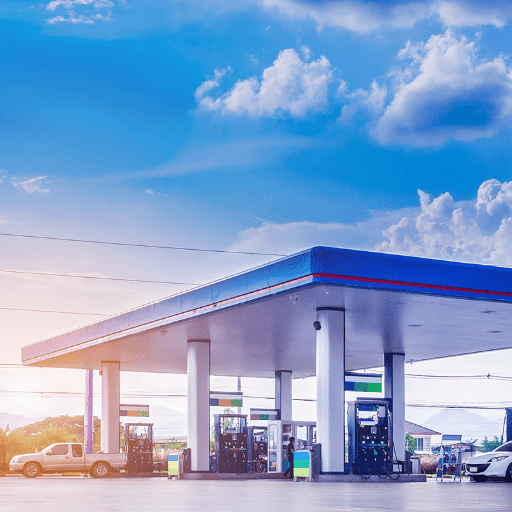
The expenses associated with the operation of a gas station can be categorized into three major types:
-
Initial Investment
The purchase or building of a gas station often demands very large up-front capital. The purchase price can be from $250,000 to more than $2 million, based on location, size, and amenities. Moreover, there might be other costs like licensing fees, legal costs, and permits.
-
Operating Expenses
Constant costs consist of purchasing fuel, paying employees, electricity, and keeping machinery in working condition. The amount of these costs will generally depend on the size of the station, the volume of fuel sold, and the services provided.
-
Maintenance and Upgrades
The periodic checks of fuel pumps, tanks, and convenience stores, even though they are costly, are necessary for safety and compliance. Additionally, the cost of upgrades like installing new technology and complying with environmental laws can also be significant in the long run.
Good financial planning and awareness of the expenses specific to the location are the keys to the successful operation of a gas station.
Initial Investment and Start-Up Costs
Starting a gas station business entails a considerable amount of money at the beginning, which is not the same for every situation; the location, size, and ownership model (franchise vs. independent) are the main factors that contribute to the difference. Usually, the initial investment covers buying or renting land, building the station, putting in the fuel pumps, and underground storage tanks, and installing the convenience store and restrooms. The average total cost is $250,000 to more than $2 million.
Initial Investment Breakdown
| Cost Category | Estimated Range | Notes |
|---|---|---|
| Total Initial Investment | $250,000 – $2,000,000+ | Varies by location and size |
| Franchise Fee | $20,000 – $1,000,000 | Depends on brand |
| Land & Building | Majority of investment | Purchase or lease |
| Equipment & Infrastructure | Significant portion | Pumps, tanks, convenience store |
| Permits & Licenses | Varies by jurisdiction | Environmental compliance included |
It is also important to consider the extra costs for getting the necessary permits and licenses, as they often come with environmental compliance obligations and the necessity to stock inventory for the convenience store. Besides, franchise gas stations will often ask for a franchising fee right away, and that can be anything between $20,000 to $1 million, depending on the brand. The owner of a gas station has to set aside money for marketing, training of employees, and giving initial capital to handle the operational costs during the first few months that the business is open.
To find out the total costs, it is necessary to analyse the local market conditions, zoning regulations, and fuel supply agreements very carefully. If you manage to balance these factors well, you will not only ensure that the buying of a gas station will be profitable but also sustainable in the long run.
Ongoing Operating Costs and Expenses
Running a gas station means dealing with a list of recurring expenditures that need to be very well managed, financially. First and foremost is gasoline, which in most cases is the greatest expense. Typical gas stations buy gasoline quite often from their suppliers, who charge variable wholesale prices, and these prices are very much determined by global market trends.
Labor is a major cost, too, and it includes all related expenses for workers directly engaged in the daily running of the gas station, providing customer service, and performing maintenance. On top of that, the gas station has to pay for utilities that include electricity for the pumps, lighting, refrigeration, and other critical equipment.
Among other monthly costs, there are rent or mortgage payments for the land, property, and liability insurance, and regularly scheduled maintenance costs for the station’s non-store equipment, like fuel pumps and refrigerating units for the convenience store. Marketing through local ads or customer loyalty programs should also have a budget because it is important to keep and bring customers in with the financial allocation that is already set. Properly managing these continuous costs is the key to the business’s long-term success.
Financial Considerations for Aspiring Owners
The aspiring gas station owners have to first check out the initial capital requirement, as buying or leasing a gas station normally costs between $250,000 and $2 million or even more, depending on the location, size, and facilities. Upfront costs can be supported by financing options from banks or Small Business Administration (SBA) loans. In addition, the inventory setup, which includes fuel, convenience store items, and related stock, is going to demand a huge amount of money upfront.
Operating expenses are another major factor to consider, which include employees’ salaries, utility bills, and fuel purchasing, among others. The profit margins on fuel are usually very low, thus the convenience store sales, car wash, or repair service have to be there as revenue streams for the business to succeed.
Know the regional regulatory requirements, including environmental compliance for fuel storage tanks and safety inspections, and health regulations that apply to the convenience store. Gathering information about gross profit averages, customer demographics, and traffic patterns in the area is imperative for the estimation of sustainable revenue. A comprehensive business plan and cash flow projection are very useful and necessary tools for the effective navigation of these financial complexities.
Future Trends in the Gas Station Industry

The gas station sector is experiencing a considerable transformation, which is the result of the combination of technology advancements and a change in consumer habits. The increasing use of electric vehicle (EV) charging stations is one of the most noticeable trends as the switch to EVs is speeding up in different parts of the world. A lot of the gas stations are adding fast chargers to their facilities, not only to satisfy the consumers but also to comply with the sustainability objectives. On top of that, the convenience stores are broadening their range of products and services by concentrating on healthier food, digital payment systems, and loyalty programs aimed at improving customer experience. Moreover, automation and self-service technologies are likely to play a significant role in cutting down the costs of operation while making the processes more efficient. All these trends indicate the change of the industry towards sustainability, convenience, and tech innovation.
Impact of Crude Oil Prices on Gas Stations
Crude oil prices have been fluctuating and which directly and massively impacted gas stations, thus affecting operational costs and consumers’ behavior. When crude oil is expensive, it, in turn, increases the wholesale price of gasoline, which eventually results in a higher price at the pump. Thus, the stations have to find a way to share the cost with the customers while at the same time being competitive in the market. On the other hand, when crude oil prices go down, they usually result in lower fuel margins. This is because if the retail price does not go up, the station might lose its profit margin for that period, as retail price adjustments are sometimes done with a delay. Besides, price volatility of crude oil can also affect demand; for example, higher fuel prices may cause consumers to buy less fuel or, over time, switch to more fuel-efficient or even electric vehicles. This reliance on oil prices shows that it is critical for gas stations to have more than one source of income, like selling in-store or providing car washes, in order to lessen the financial risks that come along with the volatility of the oil market.
Adapting to Changes in Consumer Behavior
Changing consumer behavior takes a proactive measure to understand the market trends and preferences. My attention is on analyzing the data of purchasing patterns, like the one that points to increased demand for the convenience factor, or the one that displays a shift to green practices, such as electric vehicle charging. I can better satisfy and cover the customer’s needs that are changing by diversifying the offerings, like the expansion of food and beverage options, or by offering alternative energy solutions, while at the same time decreasing the reliance on the sales of conventional fuel. Moreover, constant communication with consumers will help me to adjust the services and to make sure they are in line with the consumers’ expectations.
The Role of Technology in Gas Station Operations
The technology has paramount importance in the upgrading of gas station operations, where it comes to the areas of efficiency, customer experience, and profitability. Automated fuel dispensers, integrated payment systems, and mobile applications have facilitated the transaction processes, which in turn have reduced the waiting times and improved the convenience for the customers. The use of the advanced inventory management software has made it possible to have accurate real-time tracking of fuel levels, which has helped in the elimination of shortages or surpluses and the optimization of the restocking schedules. Moreover, the predictive analytics that are powered by artificial intelligence have made it possible for the station operators to spot trends, change the pricing strategies, and make overall decisions in a better way.
In addition, the new technologies, such as the electric vehicle (EV) charging infrastructure and the renewable energy solutions, are taking the industry in a new direction. The installation of the EV charging stations not only allows the operators to attract eco-friendly transport users but also guarantees long-term market presence in a gradually changing sector. Also, the digital marketing and loyalty programs that use data analytics are enabling the gas stations to interact with their customers in a more effective way, thus promoting repeat visits and customer loyalty. Through the adoption of these technologies, gas stations can not only react to the market trends but also hold a competitive position in the changing energy market.
| Technology | Application | Benefits |
|---|---|---|
| Automated Fuel Dispensers | Self-service fuel pumping | Reduced labor costs, faster transactions |
| Mobile Payment Systems | Digital transactions and loyalty programs | Enhanced convenience, customer retention |
| Inventory Management Software | Real-time fuel level tracking | Optimized restocking, eliminated shortages |
| AI-Powered Analytics | Trend analysis and pricing strategies | Better decision-making, improved profitability |
| EV Charging Infrastructure | Electric vehicle charging stations | Future-proofing, new customer base |
| Digital Marketing Tools | Customer engagement and loyalty | Increased repeat visits, brand loyalty |
Understanding the financial landscape of gas station ownership requires a comprehensive analysis of multiple revenue streams, operating costs, and market dynamics. While the allure of consistent fuel sales may seem attractive, the reality is that profit margins on fuel typically range from just 1.5% to 3%, or approximately 2-7 cents per gallon after all expenses are covered. This low-margin reality makes it essential for gas station owners to diversify their revenue sources and focus on high-margin offerings.
The average annual earnings of gas station owners in the United States fall between $40,000 and $100,000, though this range can vary significantly based on location, customer traffic, operational efficiency, and the strategic implementation of ancillary services. Stations positioned in high-traffic areas such as major highways, urban centers, or strategic intersections with limited competition consistently outperform those in less favorable locations. The key to success lies not just in selling fuel, but in creating a comprehensive retail and service experience that keeps customers coming back.
Convenience store sales, car wash services, food service options, and vehicle maintenance services represent the true profit engines of modern gas stations, with margins ranging from 25% to 50% or higher. These high-margin offerings not only compensate for the thin profits on fuel sales but also provide stability during periods of crude oil price volatility and market fluctuations. The strategic placement of products, implementation of loyalty programs, and adoption of modern payment technologies all contribute to enhanced customer experience and increased profitability.
The initial investment required to start a gas station business ranges from $250,000 to over $2 million, depending on factors such as location, size, franchise affiliation, and amenities offered. Ongoing operating costs including fuel purchases, labor, utilities, insurance, maintenance, and marketing require careful management and strategic planning. Aspiring owners must conduct thorough market research, understand local demographics and traffic patterns, and develop comprehensive business plans with realistic cash flow projections.
Looking toward the future, the gas station industry is undergoing significant transformation driven by technological advancement and changing consumer preferences. The integration of electric vehicle charging infrastructure, automated payment systems, AI-powered analytics, and digital loyalty programs represents the next frontier of gas station operations. Stations that embrace these technologies while maintaining focus on customer service, operational efficiency, and diversified revenue streams will be best positioned to thrive in an evolving marketplace.
The impact of crude oil price volatility cannot be understated, as fluctuations directly affect both operational costs and consumer behavior. This reality reinforces the critical importance of maintaining diverse revenue streams that can buffer against market uncertainties. Successful gas station owners understand that their business is no longer just about selling fuel—it’s about creating a convenient, efficient, and customer-focused service hub that meets the evolving needs of modern consumers.
Whether you’re a prospective investor evaluating the gas station industry or an existing owner looking to optimize operations, the keys to success remain consistent: strategic location selection, efficient cost management, diversified high-margin revenue streams, excellent customer service, and the willingness to adapt to technological innovations and changing market conditions. By focusing on these fundamental principles and maintaining a customer-centric approach, gas station ownership can indeed yield substantial and sustainable profits in this dynamic and essential industry.
Reference Sources
Comparison with Classification Algorithms in Data Mining of a Fuel Automation System’s Sales Data
Consumer Protection Related to Dispensing Pump Manipulation in SPBU (Gas Station)
Frequently Asked Questions (FAQs)
What is the yearly income of gas station proprietors?
The profit of gas station proprietors can differ greatly depending on the location, types of services provided, and the general revenue of the gas station, among other factors. Generally, gas station owners receive an income between $50,000 and $100,000 per year. But, in some cases, gas station owners who have a good location with a lot of activities might get more money, for instance, if they run a convenience store or provide services like car washing along with selling gas.
What are the major aspects affecting gas station owners’ income?
There are several main aspects determining gas station owners’ incomes, such as site, competition in the locality, and the level of service provided. Gas stations located on roads with heavy traffic usually sell more gas and therefore earn more. Besides that, the gas stations that act as mini supermarkets by selling store items can pump up their total revenue exceedingly, thus boosting the owner’s income.
What is the net profit margin for gas stations?
The net profit margin of the gas station industry is usually estimated at 1% to 3% just on fuel sales. On the other hand, when gas stations provide extra services and items such as convenience store items or car wash services, thereby increasing the efficiency of their sales, they might record profitability from their lower than fuel segment by these gases Praj noticing that their margins on these services and product sales are higher than on fuel.
How then do the operating costs affect gas stations’ revenues?
The operating costs also significantly determine the revenue of gas stations. The likes of fuel costs, compliance costs, and maintenance expenses can reduce profits. Cost control measures that are effective must always be in place for gas station owners to achieve the highest level of their net profit, as well as ensuring stability in their finances.
Are gas stations more profitable in terms of fuel or services?
From the perspective of the gas sales being the primary source of revenue, it is still true that a large number of gas stations earn more from the services and products they offer than from the sale of fuel. The likes of oil changes, along with the industry supply of gas, or even convenience store items, are often the contributors to the much greater profits when compared to the fuel sales, thus they become a part of total profitability.
What kind of sales does a gas station make on average?
The annual revenue of an average gas station can differ greatly, but a good number of them make sales of $1 million to $3 million. The factors that pull the revenues up or down are the gas station’s location, traffic, and the mix of services offered, which consequently affect the owner’s income.
How significant is the location factor in the evolution of gas station profitability?
Location is among the most decisive elements indicating the extent of a gas station’s profit. The gas stations put up along high-density roads or in very busy areas usually gain more customers, and hence the owners enjoy bigger sales, leading to shared income. However, the reverse is true for stations in deserted areas where high sales may not be possible due to limited customer flow in from nearby places.
What are the primary sources of revenue for gas station owners?
The owners of gas stations are entitled to different forms of income. They mainly make money through the sale of fuel, the sale of convenience store products, and offering services like washing or changing the oil. The strategy of diversifying revenue streams is a way of enhancing the overall profitability of a gas station, and at the same time, providing a buffer against the unpredictable nature of fuel prices.

